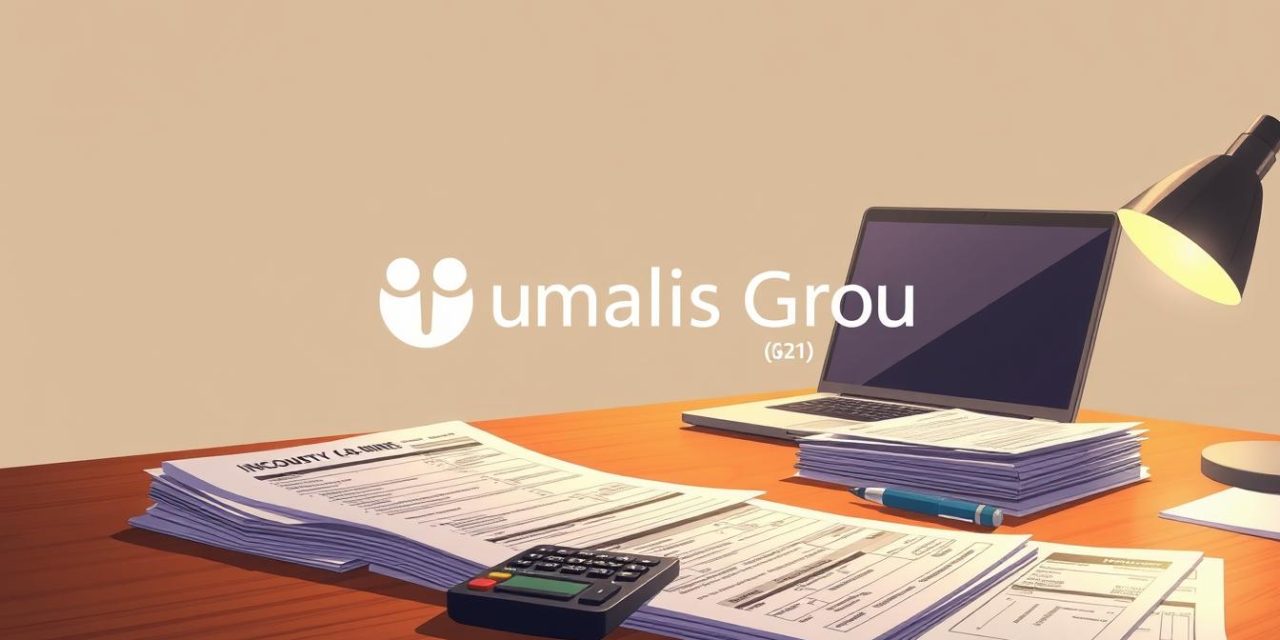Fact: For a freelancer in France with one share and €30,000 net taxable income, the 2025 calculation yields only €2,165.48 owed — an effective rate of 7.22%.
We write this article to guide you through how progressive brackets and the family quotient shape what you ultimately pay. We explain residency rules, how French-source earnings differ from other work, and when non-residents can use an average rate.
Practical steps matter: online filing opens 10.04.2025, department deadlines run from 22.05 to 05.06, and paper returns must arrive by 20.05. First-time filers should submit forms 2042 and 3916‑3916 bis to get a tax number, then create an online account once they receive their assessment.
We aim to give clear, actionable information so you can meet each deadline and understand how credits, children, pensions, or property affect your final amount. For filing window details and declaration tips, see our guide on filing and deadlines.
Table of Contents
Key Takeaways
- Progressive brackets and the family quotient determine final liability.
- 2025 online filing opens April 10; paper deadline is May 20.
- Non-residents face minimum rates on French-source payments; options may lower this.
- First-timers must send forms 2042 and 3916‑3916 bis to get a tax number.
- Keep records for pensions, property, and foreign accounts to avoid surprises.
Understanding French income tax as a freelancer in 2025
Determining whether you are treated as resident or not shapes every subsequent filing choice for freelancers in 2025.
Who is a resident vs a non-resident for tax purposes
The French administration looks at where you live and work. Key indicators are your main home, where your spouse or children live, where you carry out your principal professional activity, and where your economic interests are centered.
If your partner or children live in France, you will generally be treated as resident. If your work in France is ancillary, you may be non-resident. When facts are mixed, contact your local Service des impôts des particuliers; they alone can assess the situation.
What counts as taxable income for independent workers
For residents, worldwide income is considered. Non-residents are taxed only on French-source receipts under treaties. Typical independent revenue streams include fees, small employment engagements, pensions, and rental proceeds. Net amounts are professional receipts less allowable business expenses.
| Criterion | Resident | Non-resident |
|---|---|---|
| Main home | Located in France | Outside France |
| Primary work | Principal activity in France | Work in France is ancillary |
| Scope of declaration | Worldwide income | French-source only |
| Who to contact | Local SIP (service) | Local SIP for clarification |
If you remain unsure whether to file as resident or non-resident, gather documents that show your country residence, ask precise questions to the SIP, and verify the administrative number you will need before filing a paper or online return.
Income tax
Understanding how slices of your net taxable amount are taxed makes the calculation predictable.
Progressive scale and how it applies to net taxable income
The 2025 scale taxes only the portion of your net within each bracket. For one share the thresholds are: up to €11,497 at 0%; €11,498–€29,315 at 11%; €29,316–€83,823 at 30%; €83,824–€180,294 at 41%; above that at 45%.
Family quotient, shares and effect of children
The family quotient divides household net by shares, applies the scale, then multiplies back. Adding a spouse or children increases shares and usually lowers the overall burden.
Keep supporting documents (marriage certificate, birth records) so you can justify shares when filing on paper or online.
Worked example using 2025 brackets
Example: a single filer, one share, €30,000 net taxable amount. Calculation:
- €0 on first €11,497
- €1,959.98 on €11,498–€29,315 at 11%
- €205.50 on €29,316–€30,000 at 30%
Total = €2,165.48, giving a much lower effective rate than the top marginal rate. Use this method for any year or country source: split by bracket, apply rate, then sum.
The 2025 tax brackets and family quotient explained
This section breaks down the 2025 brackets and the family quotient so you can map them to your household situation.

Brackets for one share
The official 2025 thresholds for one share are:
| Bracket | Range (€) | Rate |
|---|---|---|
| 1 | Up to 11,497 | 0% |
| 2 | 11,498 – 29,315 | 11% |
| 3 | 29,316 – 83,823 | 30% |
| 4 | 83,824 – 180,294 | 41% |
| 5 | Above 180,294 | 45% |
Calculating shares, splitting cap and examples
The family quotient increases shares when you have a spouse or children. This usually lowers the final amount by compressing the effective rate.
« Adding a half-share for a child reduces the household burden, but a splitting cap limits the gain per half-share. »
- Single, no children: 1 share.
- Couple without children: 2 shares.
- First two children: +1 full share total; further children add half-shares.
Step-by-step: divide your taxable income by total shares, apply the scale per share, then multiply the result by the shares. Keep civil status and dependent documents to justify your claim on the relevant form boxes when filing in France.
Resident freelancers: calculating your taxable income and tax
For resident freelancers, converting gross receipts into what is actually taxable requires clear steps. Below we guide you from receipts to the final amount you will report and how the family quotient affects the result.
From gross to net: allowable charges, scale vs actual expenses
Choose a method: a flat-rate allowance may suit simple cases, but electing actual expenses can lower your net when costs are high.
Document everything. Transport, meals, training, professional insurance and a dedicated workspace are commonly deductible when you opt for actual expense deduction.
Applying the tax scale after deductions and allowances
After subtracting allowable charges and allowances you arrive at your net taxable income. Apply the 2025 progressive brackets per share under the family quotient to compute the final amount.
- Keep receipts and logs to substantiate each deduction.
- Decide cash vs accrual timing to keep yearly figures consistent.
- Report amounts on the correct form boxes to match your assessment.
Practical checklist: tally gross receipts, list deductible costs, choose flat-rate or actual method, compute net, divide by shares, apply the scale, then multiply back. This produces the figure you enter on the official form and discuss with your adviser.
Non-resident freelancers: minimum rates and average rate option
Non-resident freelancers who earn from French sources face a default minimum rate that can materially change what appears on their notice.
In metropolitan France a minimum 20% applies to net taxable amounts up to €28,797 and 30% above that. Please note the overseas departments use lower thresholds (14.4% and 20%). The administration may display “minimum 20% tax rate applied” on your assessment.
How the average rate can help
If your worldwide calculation yields a lower average rate, you can request that rate instead. Online choose “Bénéficier du taux moyen…” in step 3. On paper, tick box 8TM on form 2042‑C and attach details on form 2041 TM.
Documents, split-year rules and practical points
- Provide proof of worldwide earnings and deductible charges so the service can compute an average rate.
- Year of departure: you are resident until the departure date, then non-resident for the rest of the year.
- Allocate invoices around the move and show how children affect shares if your status changes mid-year.
« Gather clear summaries and supporting forms so the administration can apply the most favorable rate to your case. »
Withholding at source for non-residents and adjustments
Non-resident withholding at source determines which parts of your French receipts are shown as discharged and which remain taxable on the annual notice. Payers apply bracketed rates that affect both monthly cash flow and the final assessment.

Rates by bracket and what appears on the notice
Standard metropolitan brackets are 0%, 12% and 20%. The DOM use 0%, 8% and 14.4%.
The lines marked “retenue à la source libératoire” reflect amounts at 0% and 12% discharged from annual liability. Only the portion withheld at 20% may be directly credited against your final charge.
Plurality of debtors and regularization
If several clients pay you, the assessment shows “Pluralité de débiteurs – régularisation de la retenue à la source”. That entry aggregates withheld sums and reconciles them with the average rate the service computes.
| Item | Applied rate | Effect on notice |
|---|---|---|
| Wages/pensions (metro) | 0% / 12% / 20% | 0% & 12% shown as discharged; 20% credited |
| Amounts in DOM | 0% / 8% / 14.4% | Lower brackets recorded, same discharge logic |
| Multiple payers | Mix of brackets | Regularization line reconciles totals |
Example: a net figure of €146,557 (after 10% allowance) can yield a taxable basis of €100,000 once amounts under discharge are removed. If total withholding exceeds the liability computed by the average rate, you may request reimbursement. Keep clear records and forms so the local service can reconcile withheld amounts smoothly.
Filing your income tax return: forms, accounts, and deadlines
Start your filing with a clear checklist so deadlines and forms won’t catch you off guard. Gather ID, proof of residence and bank details early. This makes the process smoother for both residents and those outside france.
Key 2025 deadlines
Online filing opens 10.04.2025. Deadlines by department groups are 22.05.2025, 28.05.2025 and 05.06.2025.
The paper deadline is 20.05.2025 — this includes non-residents who must send a paper return. Allow buffer days for postage and local service handling.
Essential forms and first-time steps
Keep these forms ready: 2042, 2042‑C, 2047, 2041 TM and 3916‑3916 bis. First-time filers must send a paper package with form 2042 and 3916‑3916 bis, ID, proof of domicile, a RIB and year statements to their local Service to obtain a tax number.
After assessment you receive credentials to create an online account. Returning filers then submit via their personal account.
Claiming the average rate and practical tips
Non-residents may request the average tax rate online in step 3. On paper, enter totals in box 8TM of form 2042‑C and detail on form 2041 TM.
We recommend preparing attachments in advance, checking which forms apply to mixed income, and setting a filing calendar with buffer days to avoid late penalties.
Declaring foreign-source income and avoiding double taxation
Reporting foreign receipts requires specific forms and precise mapping to avoid errors on your return. Use form 2047 to list amounts paid by another country and the nature of each payment.
When to use form 2047 and which boxes to fill
Amounts already taxed abroad normally move from 2047 to boxes 1AF or 8TK on form 2042 to claim a credit and avoid double taxation.
Salaries or pensions paid abroad go into 1AG, with actual expense claims entered in 1AK when you choose deductions instead of a flat allowance.
Declaring foreign bank accounts (form 3916)
Please note: you must declare every bank account held outside France each year on form 3916‑3916 bis, including accounts used only for professional flows.
- Tax treaties determine which country has primary taxation rights; keep proof of prior withholding.
- Attach statements via secure messaging or post, and add a mention expresse when helpful.
- Check prefilled 2024 income data and correct entries that affect household shares or children to protect your final liability.
For filing tips and deadlines, consult our guide on filing and deadlines.
Deductions, allowances, and tax credits relevant to independents
Independent professionals must weigh flat-rate allowances against actual charges to choose the most efficient declaration route.
Actual expenses vs flat-rate and proportional deductibility
Flat-rate is simple: a fixed allowance reduces your declared base without showing receipts. It suits low-expense cases.
Actual expenses let you deduct real charges if you keep invoices and proofs. This often benefits high-cost freelancers.
For non-residents, Article 164 A generally prevents full deduction of expenses from French-source receipts. Deductions are allowed only in proportion to the portion taxable in France.
Eligibility notes and special credits for non-residents
Most reductions and credits are reserved for residents or Schumacker non-residents. Exceptions include:
- PPRT credits for safety work on rented residential property.
- Continued benefits from Pinel or Denormandie schemes started while resident.
- Loc’Avantages eligible if the agreement predates departure (proof required by the service).
| Item | Residents | Non-residents |
|---|---|---|
| Flat-rate allowance | Available | Available but often less beneficial |
| Actual professional charges | Deductible in full with proof | Deductible proportionally for French-source earnings |
| Property-related credits | Widely available | Possible if started while resident (PPRT, Pinel) |
| Company credits | Available to qualifying businesses | May apply to non-resident professionals in some cases |
« Keep clear contracts and receipts: the local service will ask for evidence when assessing credits or proportional deductions. »
Short Q&A:
- Which expenses are allowable? Professional costs with invoices; apportion if part is foreign.
- How to prove eligibility? Contracts, dated agreements, and receipts sent to the local service.
- What if documents are missing? Expect adjustment and possible reassessment.
For practical optimisation strategies and form guidance, see our tax optimisation guide.
Practical examples: end-to-end calculation and filing walkthrough
To make the numbers tangible, we run two end-to-end examples: a resident household with children and a non-resident with French-source fees.
Resident freelancer with two children
Start: gross receipts €48,000. Deduct eligible charges (€8,000) to reach net income €40,000.
Household shares: one spouse + two children = 2.5 shares. Taxable amount per share = €16,000.
Apply 2025 brackets per share and multiply back. The household calculation lowers the final amount compared with a single filer on the same receipts.
Non-resident with French-source fees
Scenario: French-source net €30,000. Minimum regime: 20% up to €28,797 then 30% above.
Average-rate option: compute worldwide effective rate; if lower, claim it on form 2042‑C (box 8TM) and attach 2041 TM.
| Step | Resident example | Non-resident example |
|---|---|---|
| Gross receipts | €48,000 | €30,000 (French-source) |
| Net after charges | €40,000 | €30,000 |
| Shares / rate choice | 2.5 shares — family quotient | Minimum rate vs average-rate claim |
| Filing checklist | 2042, supporting receipts, family documents | 2042‑C (8TM), 2041 TM, worldwide proofs |
« Keep clear supporting documents so each step — from net to taxable figure to final entry — matches your forms. »
Quick questions to check: Do your receipts match reported figures? Have you attached proof for children and deductions? Answer these before filing.
Conclusion
This final section pulls together the practical steps you need to file confidently for 2025.
Key deadlines: online filing opens 10.04.2025; departmental deadlines are 22.05, 28.05 and 05.06; paper returns must arrive by 20.05. If you moved mid-year, apply split-year treatment and consider the average-rate option if you are non-resident.
Keep organised records, reconcile figures across forms, and use your online account to communicate with the local service. Owners should note that residence levy on primary homes ended in 2023, but property declarations remain required.
If questions remain, contact your local administration. Review your 2024 income patterns and family changes now so next year’s return is smoother. We will continue to update guidance as rules evolve.
FAQ
Who is considered a resident versus a non-resident for tax purposes in France?
Residency depends on where you spend most of your time, where your main professional activity is located, and where your principal economic interests lie. If your primary home or center of economic life is in France you are treated as resident; otherwise you are non-resident and only taxed on French-source receipts. Each criterion is assessed jointly to determine your status for the year.
What counts as taxable amounts for independent workers?
For independents, taxable amounts include professional fees, commissions, and other receipts related to activity carried out in France. Certain social benefits, pensions paid from French schemes, and rental receipts from French property are also relevant. Foreign-source receipts are declared too, with relief mechanisms to avoid double taxation when applicable.
How does the progressive scale apply to net taxable amounts?
After deductions and allowances, your net taxable base is split using the family quotient and then taxed according to progressive brackets. Each share of the quotient is taxed at increasing marginal rates; the resulting tax is multiplied by the number of shares to get the household liability. Credits and reductions are applied afterwards.
What is the family quotient and how do children affect it?
The family quotient converts household composition into shares: a single adult counts as one share; a spouse as another; children add halves or full shares depending on order. More shares lower the tax per share and can reduce overall liability, subject to the cap on the tax benefit per half-share.
Can you provide a worked example using 2025 brackets and rates?
A simple walkthrough: calculate net taxable after allowable costs, determine household shares, divide net taxable by shares to get tax per share using 2025 brackets, multiply by shares, then apply any credits. This shows how deductions and the quotient change the final amount. Exact numerical thresholds depend on the announced 2025 scale.
What are the 2025 brackets for one share and their thresholds?
The scale runs from a 0% bottom band up to 45% at the top band, with intermediate rates for middle bands. Thresholds define which portion of your taxable per share falls into each rate. Official published tables give precise cut-offs for the year and should be consulted when you compute liability.
How do I calculate household shares and the splitting cap?
Count shares for each adult and child, then apply the statutory cap that limits the tax reduction per half-share. This cap prevents excessive benefit for very high earners and is adjusted annually. Use the cap value when estimating the advantage from additional family members.
How do I move from gross receipts to net taxable for a resident freelancer?
Deduct allowable charges: social contributions, business expenses (actual or flat-rate), and specific professional allowances. Choose between actual costs or standard regimes depending on which gives the better result. The result after deductions and any special allowances is your net taxable base.
When should I use actual expenses versus the flat-rate deduction?
Use actual expenses if your real costs exceed the standard allowance — this benefits those with high professional outlays. The flat-rate is simpler and often works for low-overhead activities. Compare both methods on your return to select the most advantageous option.
How is the scale applied after deductions and allowances?
The post-deduction net taxable amount is divided by household shares to determine the tax per share. Apply the progressive rates to each slice of that per-share amount, sum the results, and multiply by shares. Finally, subtract credits and apply any surcharges or caps.
What minimum rates apply to non-residents on French-source receipts?
Non-residents may face minimum withholding rates such as 20% or 30% on French-source fees, depending on the type of revenue and bilateral rules. These minima ensure a base level of collection when residency limits full taxation in France.
How can a non-resident claim the average rate if it is more favorable?
Non-residents can request taxation at the average household rate if that produces a lower liability than the minimum withholding. This requires declaring worldwide receipts and following the specific procedure on the return to opt for regular assessment rather than fixed withholding.
What happens in the year of departure from France?
The year you leave may be split: you can be resident for part of the year and non-resident for the remainder. French-source earnings for the non-resident period are treated under non-resident rules. Document the change of residence and keep proofs like move dates and contracts to support the split-year treatment.
How does withholding at source work for non-residents and what appears on the notice?
Withholding may be applied by payers in France at rates tied to brackets (for example 0%, 12%, 20%) depending on circumstances. The tax notice shows amounts withheld, regularizations, and any balance due. It reconciles withholding with the assessed liability after your declaration.
What if multiple French payers withhold payments — how is regularization performed?
The tax authority consolidates withholdings from different debtors and compares the total to assessed tax. If the sum withheld exceeds or falls short of liability, you receive a refund or a bill. Keep accurate records of all withholdings and supporting documents.
What are the key 2025 deadlines for online and paper returns?
Deadlines differentiate between online filers and paper submissions; online returns typically have later dates and may vary by department. Check the official calendar each year and create an account early to avoid last-minute issues. Missing deadlines can trigger penalties.
Which forms are essential for independent workers (2042, 2042-C, 2047, 2041 TM, 3916)?
Form 2042 is the main return; 2042-C covers additional categories; 2047 declares foreign-source receipts; 2041 TM applies to specific property regimes; 3916 declares foreign bank accounts. Complete the forms that match your situation and attach supporting schedules when required.
How do I create an online account and obtain a tax number?
Visit the official tax website, create a personal account with ID and fiscal references, or request a tax identification number if you lack one. The portal lets you file returns, view notices, and manage payments. Keep login details secure and update your contact information.
When must I use form 2047 and specific boxes like 1AF, 1AG, 8TK?
Use 2047 to list foreign-source receipts and specify types in the corresponding boxes: employment, pensions, and other categories. Boxes such as 1AF/1AG and 8TK map to particular foreign receipts and credits. Proper categorization ensures correct relief for foreign withholding.
Do I need to declare bank accounts held outside France (form 3916)?
Yes. French residents and certain declarants must report foreign-held accounts using form 3916 (or 3916 bis) when applicable. Failure to declare risks penalties, so list account details, dates, and institutions when filing.
Which deductions, allowances, or credits are most relevant to independents?
Key items include social contributions, actual professional expenses, specific allowances for certain regimes, and credits for family-related expenses or research and training. Eligibility can differ for non-residents. Review each deduction against rules to confirm applicability.
How do actual expenses compare to a proportional or flat-rate deduction?
Actual expenses require documentation and can yield larger deductions if costs are high. Proportional or flat-rate deductions simplify filing but may be less favorable for those with significant outlays. Run both calculations before choosing the regime.
Are non-residents eligible for the same credits and allowances?
Some credits and allowances are limited or unavailable to non-residents. Eligibility depends on residence status and bilateral agreements. Check specific provisions for credits like family-related relief or work-related credits before claiming.
Can you give a practical resident freelancer example with children?
Start with gross receipts, subtract social charges and allowable costs, compute net taxable, divide by household shares including children, apply the progressive scale per share, multiply back by shares, then subtract any credits. This sequence shows how family composition changes the final liability.
How does a non-resident with French-source fees choose between minimum and average rates?
Compare the withholding minimum applied to your French receipts with the calculated average rate based on household situation. If the average assessment is lower, request that option on your declaration. Maintain documentation to substantiate worldwide receipts if required.
What records should I keep to support my declaration and claims?
Retain contracts, invoices, bank statements, proof of residence changes, social contribution certificates, and documentation for deductions for at least the statutory retention period. Clear records simplify audits and any post-filing regularizations.





